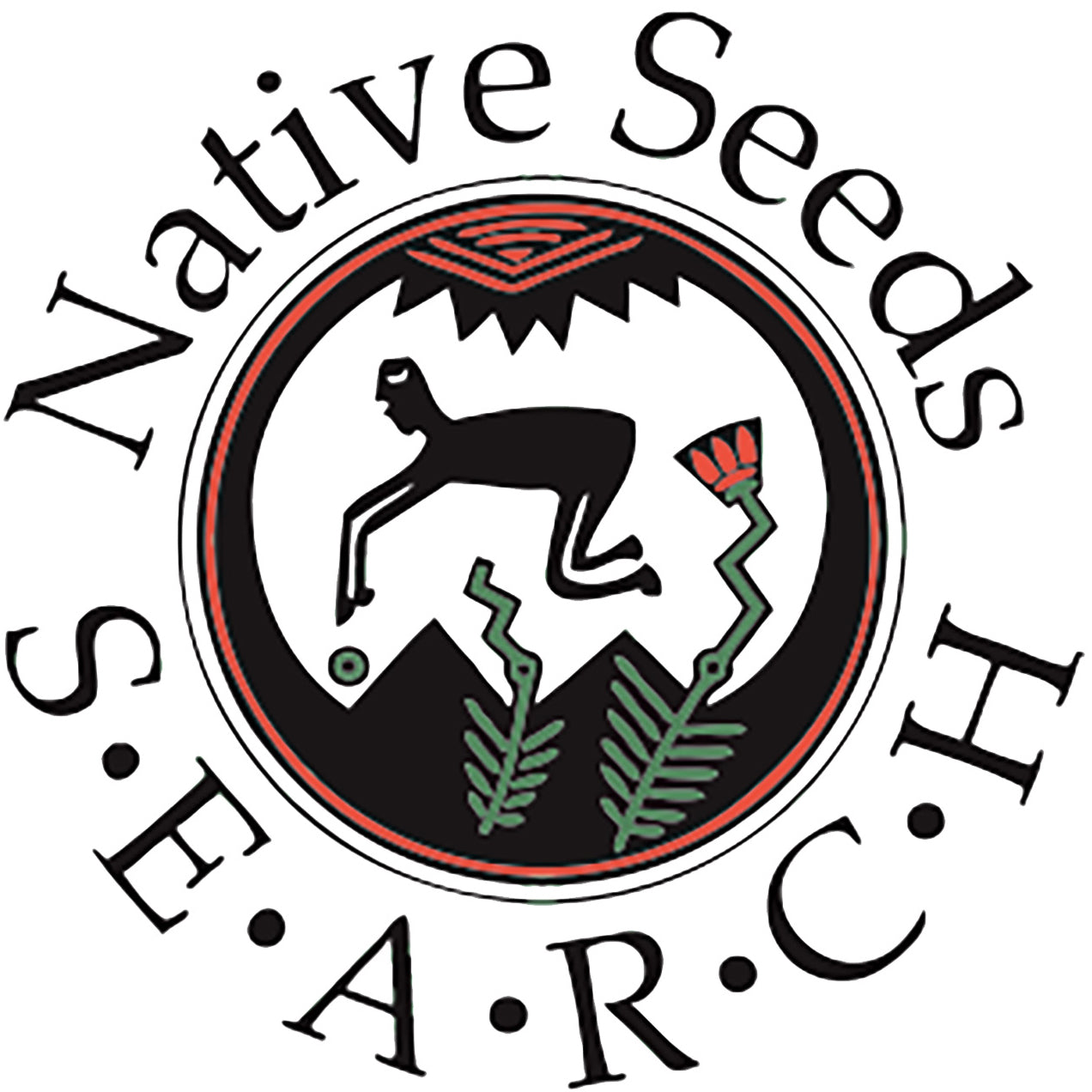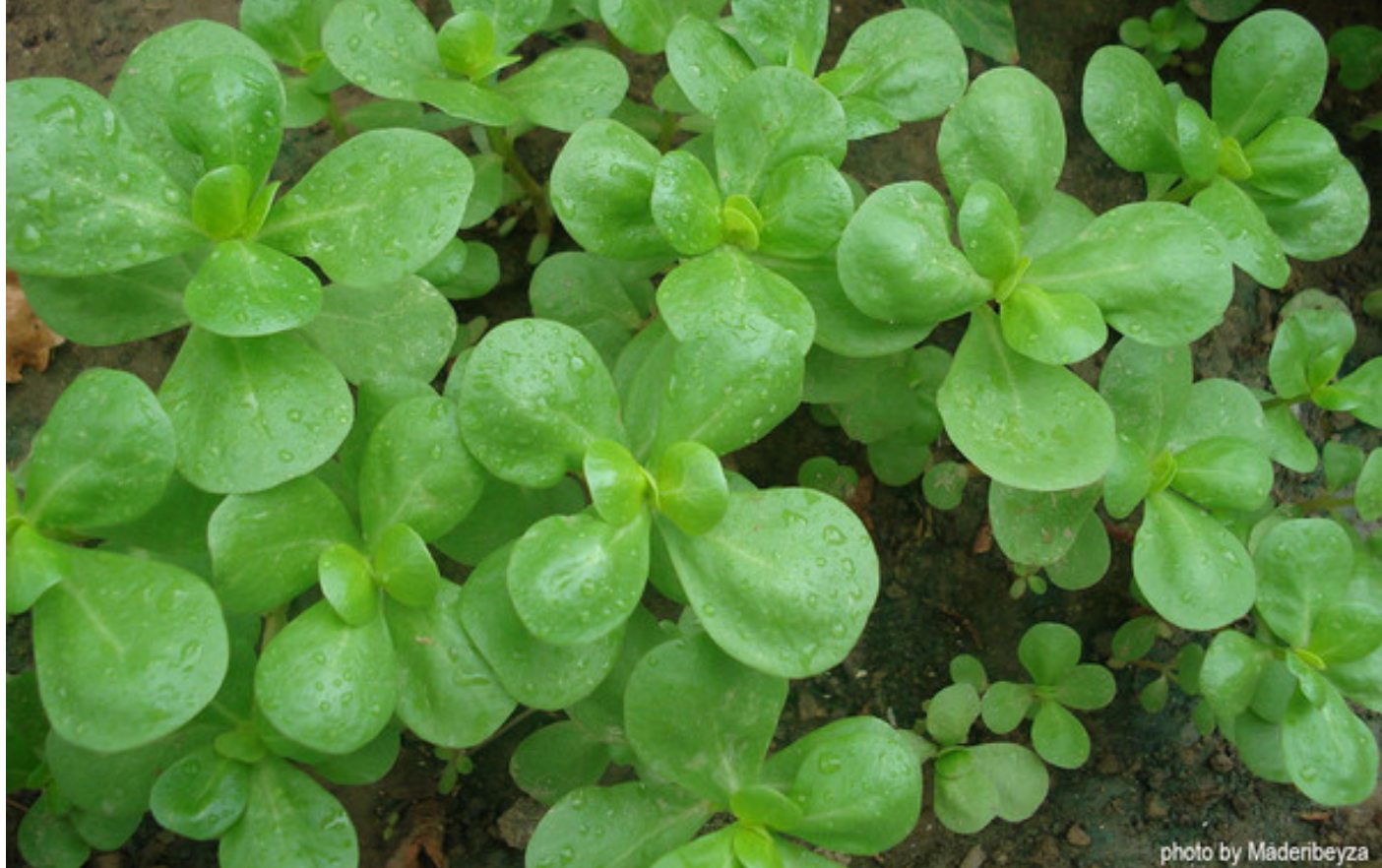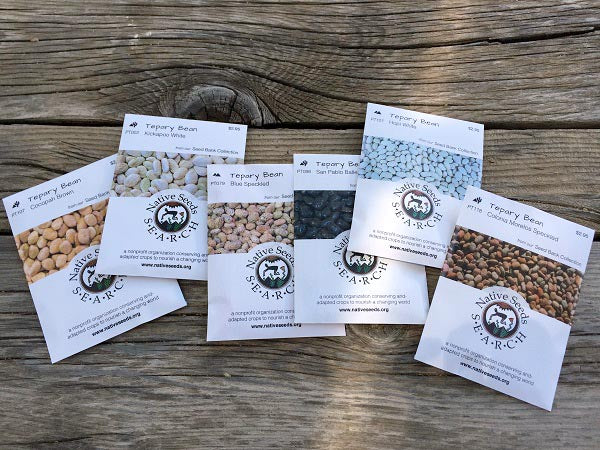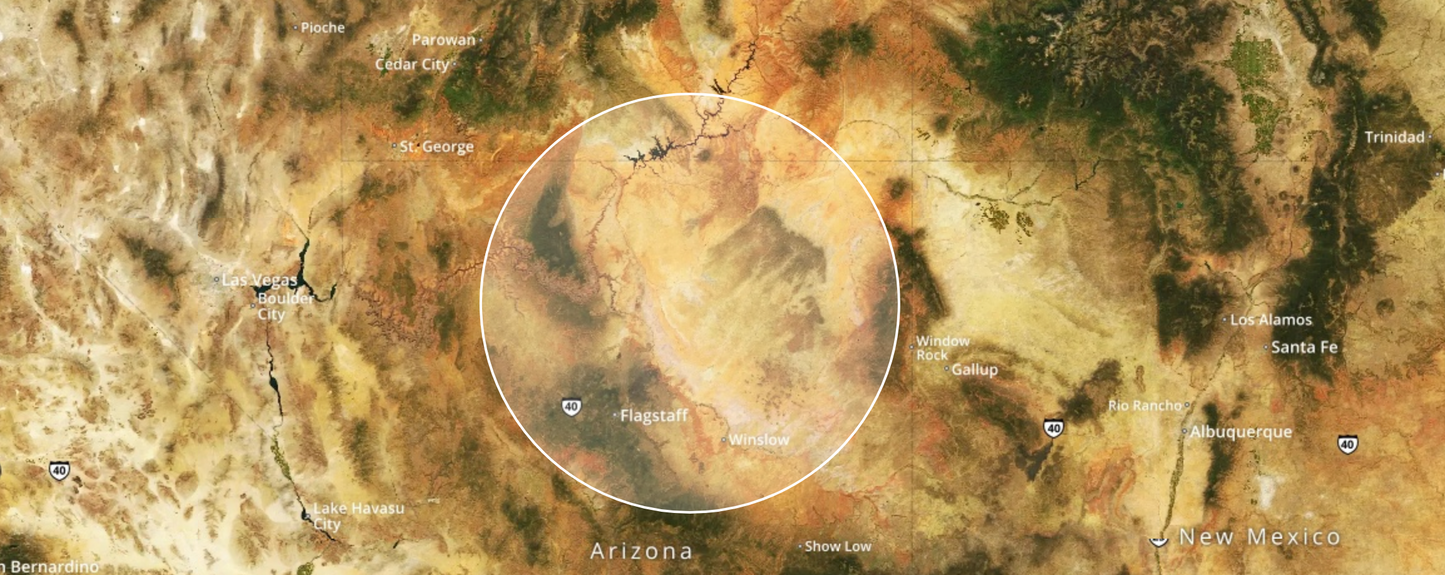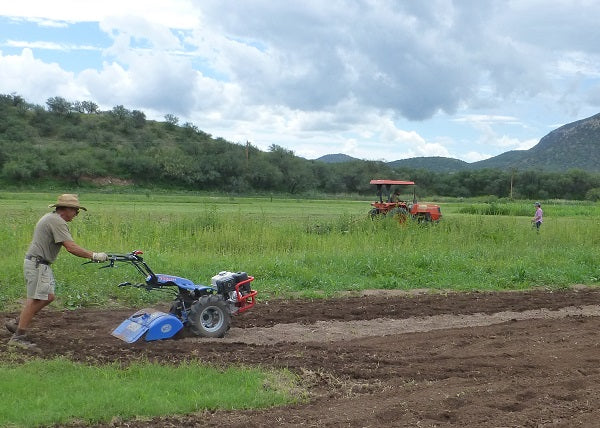In the lyrics of America the Beautiful, the line “amber waves of grain” does not necessarily conjure up the image of farmland in the desert Southwest. However, if you were looking out onto the farming landscapes of our region 100 years ago that is exactly what you would have seen. Arizona, southe...
This store requires javascript to be enabled for some features to work correctly.
-
BUY SEEDS
- Popular Warm Season Varieties
- Popular Cool Season Varieties
- Gift Card
- Garden and Seed Saving Supplies
- 2025 Seedlisting
- Monsoon Collection
- Amaranth
- Arugula
- Beans
- Beets
- Broccoli
- Brussels Sprouts
- Cabbage
- Carrots
- Chiles/Peppers
- Chiltepines (Wild Chiles)
- Corn
- Cotton
- Cowpeas/Black-Eyed Peas
- Cucumbers
- Devil's Claw
- Eggplant
- Gourds
- Greens - Cool Season
- Greens - Warm Season
- Herbs
- Kale
- Lettuce
- Luffa
- Melons
- Mustards
- Okra
- Onions and Garlic
- Panic Grass
- Parsnips
- Peas
- Radishes
- Sorghum
- Squash
- Sunflowers
- Swiss Chard
- Tobacco
- Tomatillos
- Tomatoes
- Turnips
- Watermelons
- Wheat
- Wildflowers
- Crop Wild Relatives
-
BUY SEEDS
- Popular Warm Season Varieties
- Popular Cool Season Varieties
- Gift Card
- Garden and Seed Saving Supplies
- 2025 Seedlisting
- Monsoon Collection
- Amaranth
- Arugula
- Beans
- Beets
- Broccoli
- Brussels Sprouts
- Cabbage
- Carrots
- Chiles/Peppers
- Chiltepines (Wild Chiles)
- Corn
- Cotton
- Cowpeas/Black-Eyed Peas
- Cucumbers
- Devil's Claw
- Eggplant
- Gourds
- Greens - Cool Season
- Greens - Warm Season
- Herbs
- Kale
- Lettuce
- Luffa
- Melons
- Mustards
- Okra
- Onions and Garlic
- Panic Grass
- Parsnips
- Peas
- Radishes
- Sorghum
- Squash
- Sunflowers
- Swiss Chard
- Tobacco
- Tomatillos
- Tomatoes
- Turnips
- Watermelons
- Wheat
- Wildflowers
- Crop Wild Relatives
-
BUY SEEDS
- Popular Warm Season Varieties
- Popular Cool Season Varieties
- Gift Card
- Garden and Seed Saving Supplies
- 2025 Seedlisting
- Monsoon Collection
- Amaranth
- Arugula
- Beans
- Beets
- Broccoli
- Brussels Sprouts
- Cabbage
- Carrots
- Chiles/Peppers
- Chiltepines (Wild Chiles)
- Corn
- Cotton
- Cowpeas/Black-Eyed Peas
- Cucumbers
- Devil's Claw
- Eggplant
- Gourds
- Greens - Cool Season
- Greens - Warm Season
- Herbs
- Kale
- Lettuce
- Luffa
- Melons
- Mustards
- Okra
- Onions and Garlic
- Panic Grass
- Parsnips
- Peas
- Radishes
- Sorghum
- Squash
- Sunflowers
- Swiss Chard
- Tobacco
- Tomatillos
- Tomatoes
- Turnips
- Watermelons
- Wheat
- Wildflowers
- Crop Wild Relatives
-
BUY SEEDS
- Popular Warm Season Varieties
- Popular Cool Season Varieties
- Gift Card
- Garden and Seed Saving Supplies
- 2025 Seedlisting
- Monsoon Collection
- Amaranth
- Arugula
- Beans
- Beets
- Broccoli
- Brussels Sprouts
- Cabbage
- Carrots
- Chiles/Peppers
- Chiltepines (Wild Chiles)
- Corn
- Cotton
- Cowpeas/Black-Eyed Peas
- Cucumbers
- Devil's Claw
- Eggplant
- Gourds
- Greens - Cool Season
- Greens - Warm Season
- Herbs
- Kale
- Lettuce
- Luffa
- Melons
- Mustards
- Okra
- Onions and Garlic
- Panic Grass
- Parsnips
- Peas
- Radishes
- Sorghum
- Squash
- Sunflowers
- Swiss Chard
- Tobacco
- Tomatillos
- Tomatoes
- Turnips
- Watermelons
- Wheat
- Wildflowers
- Crop Wild Relatives
-
BUY SEEDS
- Popular Warm Season Varieties
- Popular Cool Season Varieties
- Gift Card
- Garden and Seed Saving Supplies
- 2025 Seedlisting
- Monsoon Collection
- Amaranth
- Arugula
- Beans
- Beets
- Broccoli
- Brussels Sprouts
- Cabbage
- Carrots
- Chiles/Peppers
- Chiltepines (Wild Chiles)
- Corn
- Cotton
- Cowpeas/Black-Eyed Peas
- Cucumbers
- Devil's Claw
- Eggplant
- Gourds
- Greens - Cool Season
- Greens - Warm Season
- Herbs
- Kale
- Lettuce
- Luffa
- Melons
- Mustards
- Okra
- Onions and Garlic
- Panic Grass
- Parsnips
- Peas
- Radishes
- Sorghum
- Squash
- Sunflowers
- Swiss Chard
- Tobacco
- Tomatillos
- Tomatoes
- Turnips
- Watermelons
- Wheat
- Wildflowers
- Crop Wild Relatives
-
BUY SEEDS
- Popular Warm Season Varieties
- Popular Cool Season Varieties
- Gift Card
- Garden and Seed Saving Supplies
- 2025 Seedlisting
- Monsoon Collection
- Amaranth
- Arugula
- Beans
- Beets
- Broccoli
- Brussels Sprouts
- Cabbage
- Carrots
- Chiles/Peppers
- Chiltepines (Wild Chiles)
- Corn
- Cotton
- Cowpeas/Black-Eyed Peas
- Cucumbers
- Devil's Claw
- Eggplant
- Gourds
- Greens - Cool Season
- Greens - Warm Season
- Herbs
- Kale
- Lettuce
- Luffa
- Melons
- Mustards
- Okra
- Onions and Garlic
- Panic Grass
- Parsnips
- Peas
- Radishes
- Sorghum
- Squash
- Sunflowers
- Swiss Chard
- Tobacco
- Tomatillos
- Tomatoes
- Turnips
- Watermelons
- Wheat
- Wildflowers
- Crop Wild Relatives
New On Our Blog
Heritage Food is the Star at the Farm-To-Table Picnic
|
Betsy Armstrong
Native Seeds/SEARCH is excited to be partnering up with Friends of Tucson's Birthplace and some of Tucson’s top innovative chefs to celebrate our heritage food at the Farm to Table picnic event. This one-of-a-kind picnic will be held at the lush Mission Garden on October 18, 2015, from 4 to 7 pm,...
Purslane: Is it a Weed or a Treat? + Recipe
|
Laura Neff
With the monsoon rains rolling across the Sonoran desert, the weeds are growing like, well, weeds. But not all are unwanted guests that suddenly occupy your garden. I personally like to consider them "no effort" annual food crops. They are abundant and resilient plants, and some of them, like Pur...
A Short History of Panic Grass
|
Laura Neff
By Barney T. Burns, PhD, Co-founder of Native Seeds/SEARCH
Panic grass, or panicum sonorum, was domesticated in either Arizona or Sonora sometime during the prehistoric period. Evidence of panic grass being grown by the Hohokam Indians has been found in several archaeological excavations in Ariz...
Benne: From Africa to Southwestern Kitchens and Gardens
|
Melissa Kruse-Peeples
Agriculture in the American southwest is a mix of regionally domesticated varieties, from tepary beans that have been cultivated here for several thousand years to watermelons or wheat which were introduced from other areas but have been grown here for a few hundred years. These later introducti...
Celebration of Tepary Beans (Part 2)
|
Melissa Kruse-Peeples
By Melissa Kruse-Peeples, NS/S Education Coordinator. Published on June 18, 2015.
Tepary beans are one of the most heat and drought tolerant crop varieties in the world. These traits are the result of centuries of adaptation to the unique growing conditions of the Southwest, the ultimate heritage...
Celebration of Tepary Beans (Part 1)
|
Melissa Kruse-Peeples
By Melissa Kruse-Peeples, NS/S Education Coordinator. Published on June 11, 2015.
Wanted: A crop alternative that can handle arid conditions and scorching sun during this current era of mega droughts and rising temperature. An option that tastes great and is nutritious is a major plus.
The ans...
Farming for Resiliency at the NS/S Conservation Farm
|
Betsy Armstrong
By Lynda Prim, NS/S Conservation Farm Manager. Published on May 18, 2015.
Farming systems all over the world are facing complex problems in terms of food production related to natural resource depletion, climate change, and increasing food demand. In order to deal with the future of producing foo...
Native Seeds/SEARCH is excited and proud to unveil a new online portal for exploration of the rich crop diversity maintained by the NS/S seed bank. The ADAPTS platform is designed to connect you with varieties in the NS/S collection that are most relevant to your unique needs. Are you a gardener ...
Small Farms and Traditional Indigenous Agriculture
|
Betsy Armstrong
By Lynda Prim, NS/S Conservation Farm Manager.
In my work with small scale farmers and traditional indigenous farmers, I have found it valuable to think about “climate smart” agriculture in the framework of resiliency. In agriculture, I think of resiliency has having 3 cornerstones: flexibility, ...
